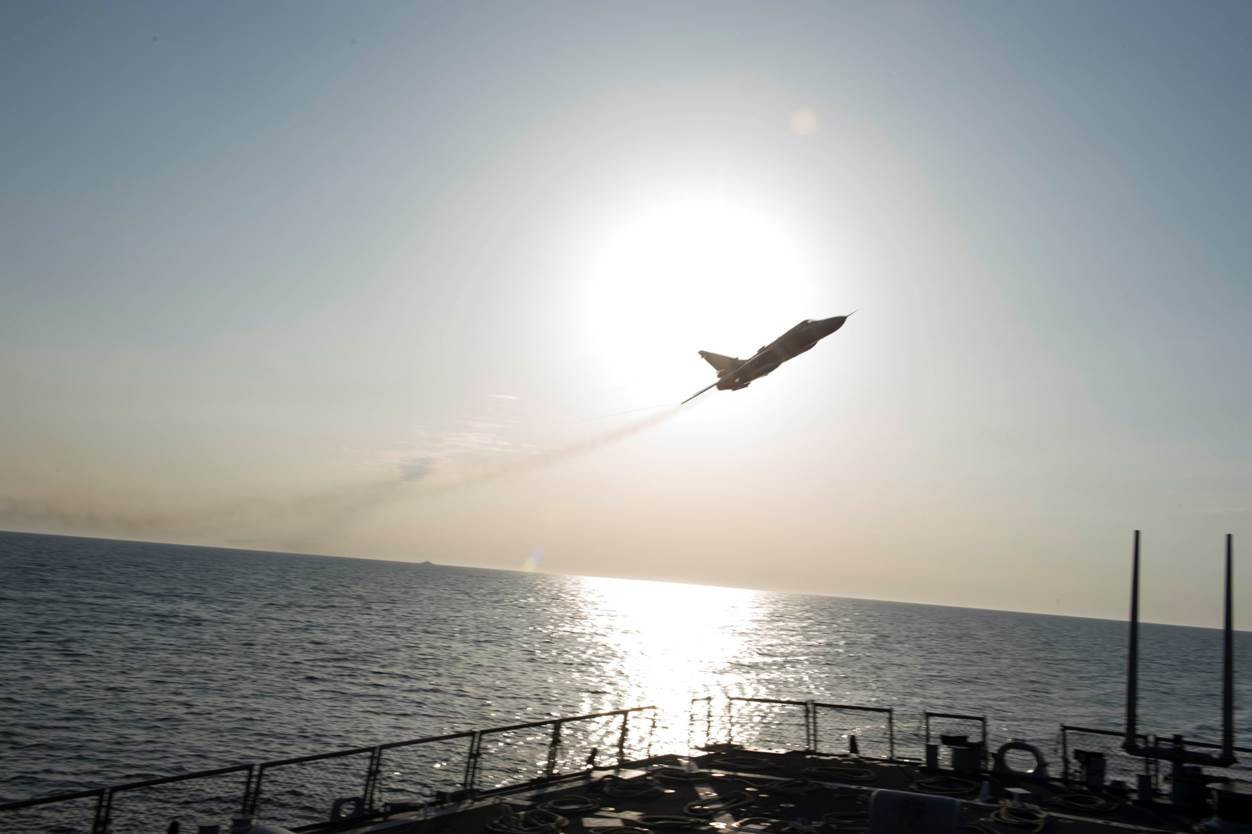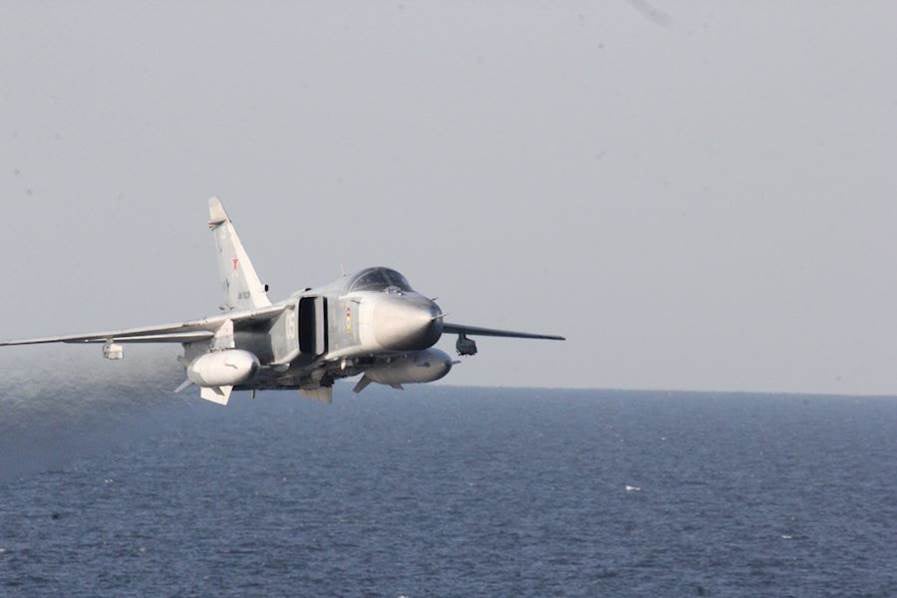
160412-N-
The fly-by of the USS Donald Cook (DDG-75) in the Baltic Sea by Russian Sukhoi Su-24 Fencers on two separate occasions earlier this week serves as a dramatic reminder of the Baltic Sea region as a friction zone between Russia and the U.S. and its NATO allies.
The incident is also a powerful reminder of Russia’s apparent military strategy for the broader region; keep the U.S. and NATO out in a crisis, and make peacetime U.S. and NATO operations in the region as uncomfortable as possible.
This is not the first close encounter between the U.S. and Russia in the Baltic Sea. In 2014, a U.S. Air Force reconnaissance flight had to break off its flight plan and head into Swedish airspace in response to an aggressively maneuvering Russian fighter jet. But the countries of the region have certainly experienced most of the uncomfortable moments with Russian air and maritime forces in the Baltic Sea region. A Russian frigate ran close alongside a Swedish-Finnish research vessel that, according to Russia’s Baltic Sea fleet, was operating too close to a Russian naval exercise. Ships laying cables between Sweden and Lithuania have had to halt their work over safety concerns instigated by closely maneuvering Russian warships. And let’s not forget the widely covered Swedish and Finnish hunts for suspected Russian submarines deep in Swedish and Finnish territorial waters.

The buzz of Donald Cook and the other maritime encounters over the last few years should be understood as an extension of Russia’s emerging anti-access area denial (A2/AD) posture in the Baltic Sea. It is centered on a growing set of capabilities in the Kaliningrad enclave, and includes the S-400 air defense system, and Iskander ballistic missiles. Russia could also quickly move its Bastion anti-ship missile system into the region in a crisis. However, Russia’s military A2/AD network is coupled with political signaling and military maneuvers to show that NATO in general, and the United States in particular, is not welcome in the Baltic Sea region, and that operating there will be an uncomfortable experience. And the examples of this abound beyond the immediate maritime domain as well.

BALTIC SEA – Two Russian Sukhoi Su-24 attack aircraft fly over the USS Donald Cook (DDG 75) Apr. 12, 2016. Donald Cook, an Arleigh Burke-class guided-missile destroyer, forward deployed to Rota, Spain is conducting a routine patrol in the U.S. 6th Fleet area of operations in support of U.S. national security interests in Europe. (U.S. Navy photo/Released)
When Denmark proposed to have its frigates join NATO’s missile defense network as sensor platforms, Russia reacted by stating that the Danish frigates would become targets for Russia, perhaps even for nuclear attacks. Russia’s chief of defense has also warned of dire consequences if Finland continues to draw closer to NATO.
The Asia-Pacific is no longer the only region where the U.S. Navy and its friends and allies face contested waters. Maritime competition and A2/AD are now very much part of the equation in the European maritime domains as well. Indeed, Donald Cook has experienced similar fly-overs by Russia jets while operating in the Black Sea in 2014. And the Baltic Sea region could very well see more close and dangerous encounters in the coming months. The region will once again play host to the BALTOPS exercise this summer. A large anti-submarine warfare exercise is currently being planned for the Baltic as well. On top of that, NATO’s important summit in Warsaw is coming up in early July. Count on Russia to not allow that meeting so close to the Baltic Sea to go undisturbed.





